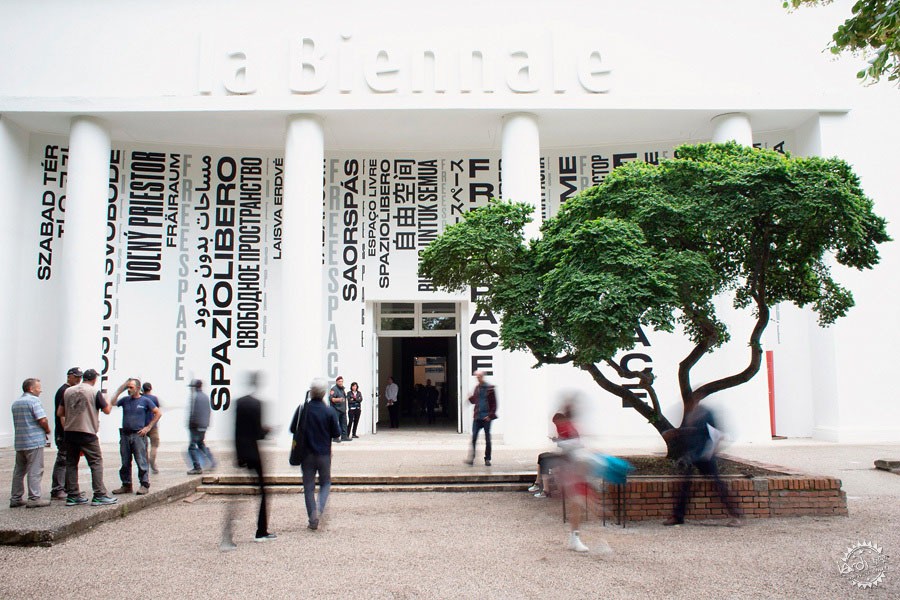
© Italo Rondinella
如何设计双年展:自由空间真的自由吗?
How (Not) to Design a Biennale: Is Freespace Free?
由专筑网邢子,李韧编译
这篇文章最初发表于“Metropolis Magazine”,标题为“回顾今年的威尼斯建筑双年展”。
第16届国际建筑展览会于5月26日至11月25日在威尼斯开幕,其中存在的争议在于建筑的敏感性与技巧并不一定要转移到建筑展览的组织工作中。
双年展的策展人来自都柏林的Grafton Architects事务所,该事务所由Yvonne Farrell和 Shelly McNamara主要负责,他们认为自己设计的一系列建筑作品都倾向于国际意义上的公共建筑。这是两人迄今为止最大的策展活动,同时表达了作品的影响力。Grafton围绕着“自由空间”的模糊概念构建了展览,这个概念非常模糊,只包含了许多与之相关的建筑师、项目等展示对象。
在过去二十年左右的时间里,建筑策划已经从具有一定影响力的分支学科,演变为建筑实践。对于那些不追求设计成果的建筑师来说,研究和策划的概念已成为首选,而Farrell和McNamara都不是这样的建筑师,他们是执着的实践者,擅长于建造建筑而非论述建筑。他们在秘鲁利马的UTEC大学校园和米兰的Luigi Bocconi大学的作品体现了对环境敏感的社区主义精神。令人惊讶的是,Grafton在阐述“自由空间宣言”时采用了一些天真的陈词滥调,该宣言在双年展开幕前一年公布:“自由空间描述了慷慨精神和人文意识,这是建筑议程的核心。建筑是光、太阳、阴影、月亮、空气、风、重力的表现方式,揭示了世界的奥秘。”对于建筑师来说,“自然的免费礼物”似乎忽略了建筑的奢侈定位。
This article was originally published by Metropolis Magazine under the title "Taking a Second Look at This Year's Nebulous Venice Architecture Biennale."
One of the few incontrovertible truths to emerge from the 16th International Architecture Exhibition, which opened in Venice on May 26 and runs through November 25, is that sensitivity and skill in making architecture do not necessarily transfer to the work of organizing an architecture exhibition.
The Biennale’s curators, Dublin-based Grafton Architects, helmed by Yvonne Farrell and Shelly McNamara, lay claim to a formidable portfolio of built work that skews toward public buildings of international significance. The duo’s largest curatorial endeavor to date, the show suffers from an eagerness to acknowledge their own influences. Grafton structures the exhibition around the nebulous concept of “Freespace,” an idea so vague that it ultimately contains a multitude of only tangentially related architects, projects, and ephemeral display objects.
In the past two decades or so, architectural curation has morphed from a relatively small, if pointedly influential, subdiscipline into a component part of what it entails to practice architecture beyond the studio. For those trained architects who cannot or choose not to pursue design practice, notions of research and curating have become the go-to alternative. Farrell and McNamara are no such architects: They are committed practitioners who have excelled at producing buildings rather than discourse. Their lauded structures for the UTEC University Campus in Lima, Peru, and the Università Luigi Bocconi in Milan evince a context-sensitive, communitarian ethos. Somewhat surprisingly, then, Grafton resorted to naive platitudes in articulating the “Freespace Manifesto,” which it published a year ahead of the Biennale opening: “Freespace describes a generosity of spirit and a sense of humanity at the core of architecture’s agenda,” and “Architecture is the play of light, sun, shade, moon, air, wind, gravity in ways that reveal the mysteries of the world.” An aphorism about “nature’s free gifts” to architects comes across as oblivious to architecture’s status as a luxury commodity.
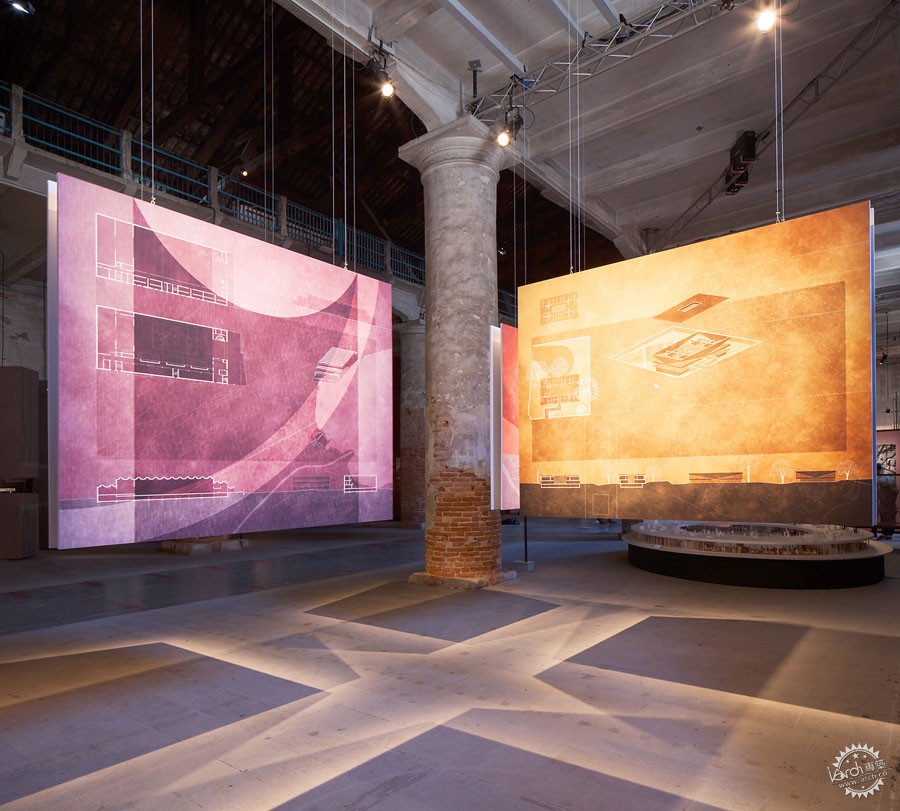
Angela Deuber's drawings in the Arsenale at the Venice Biennale. Image © Italo Rondinella
正如Léa-Catherine Szacka在其《对呈现过往的再造访:1980年威尼斯建筑双年展》一书中写的那样,伴随着精英机构民主化的明确目标,建筑与双年展相结合。展览负责人员决定在威尼斯开展两年一度的建筑展示会,某种程度上来说,是为了呼应人们对双年展中古老、传奇的艺术风格排他主义的抗议。双年展的管理人员认为,建筑是最具公民意识、最具公众视野的创意学科,它激发历史名城威尼斯的活力,使双年展成为更加便利、更透明的公共机构。为此,首届建筑展的艺术总监Paolo Portoghesi推动了对废弃的威尼斯军械库(Venetian Arsenale)及其周边环境的恢复,并将其作为建筑的展示场地。
在言论上,Grafton的版本与这些最初的抱负有着许多相同之处。但是,也使得建筑双年展明显地退回到专业术语以及展示和视觉交流的学科模式中,这些模式的关注者只有一些关注设计的人群。特别是在Grafton的展览中,一个反复出现且难以调节的问题就是军械库的Corderie空间。这座前造船综合体的绳索制造中心,有着一条长达1,040英尺的走廊,通过以往的两次国际展览都发现展览空间不足的问题,这个空间过于线性,尤其在2018年,当时建筑正在寻求建立自己的发展替代轨迹。军械库展览区将其大部分展示内容都放置在同一个空间之中,从而形成连续不断的空间效果。一些特别的装置引起了人们的注意,其中包括Angela Deuber在瑞士塔尔的一座混凝土学校建筑的图纸,以及由孟买Case Design设计的Avasara学院的材料样本和模型,但是其中的线性空间却十分广阔,策展人在其中放置了一些与主题关联较弱的作品,并且以此来吸引人们的注意,同时也掩盖了空间的某些缺陷。
Architecture was brought into the Biennale’s fold with the explicit goal of democratizing an elitist institution, as Léa-Catherine Szacka assiduously documents in her book Exhibiting the Postmodern: The 1980 Venice Architecture Biennale. Exhibition officials decided to establish a biennial architecture showcase in Venice, in part as a response to protests against the exclusivity of the older, storied art iteration of the Biennale. Architecture, understood by the Biennale’s management as the most civic and public-facing of the creative disciplines, was entrusted with activating the historic city of Venice and with making the Biennale an altogether more accessible, transparent institution. To this end, Paolo Portoghesi, artistic director of the inaugural architecture exhibition, pushed to recover the disused Venetian Arsenale as a site for exhibiting architectural ephemera and thereby also its full-scale 12th-century environs.
At least in rhetoric, Grafton’s edition shares many of these initial ambitions. But Freespace also makes palpable the Architecture Biennale’s retreat into professional jargon as well as disciplinary modes of display and visual communication that hardly register beyond design-centric audiences. A recurring problem, especially in Grafton’s exhibition, where it was left completely unmediated, is the space of the Arsenale’s Corderie. The former shipbuilding complex’s rope-making center, a 1,040- foot-long corridor, has proved an inadequate exhibition space in at least the past two iterations of the international exhibition. The space is cripplingly linear, especially in 2018, when architecture is seeking to establish alternative trajectories of its own development. Installed as an uninterrupted gangplank, the Arsenale display swallowed most of its contents into a poorly considered morass of incessant stuff. Some exceptional installations commanded attention—among them Angela Deuber’s drawings for a concrete school building in Thal, Switzerland, and material samples and models for the Avasara Academy by Mumbai-based Case Design—but the sheer expanse of the straight-through space, organized as a procession of individual projects rather than as thematic clusters of displays, drew attention away from the actual content of the exhibition, and instead to the physical slog of crossing the Corderie.
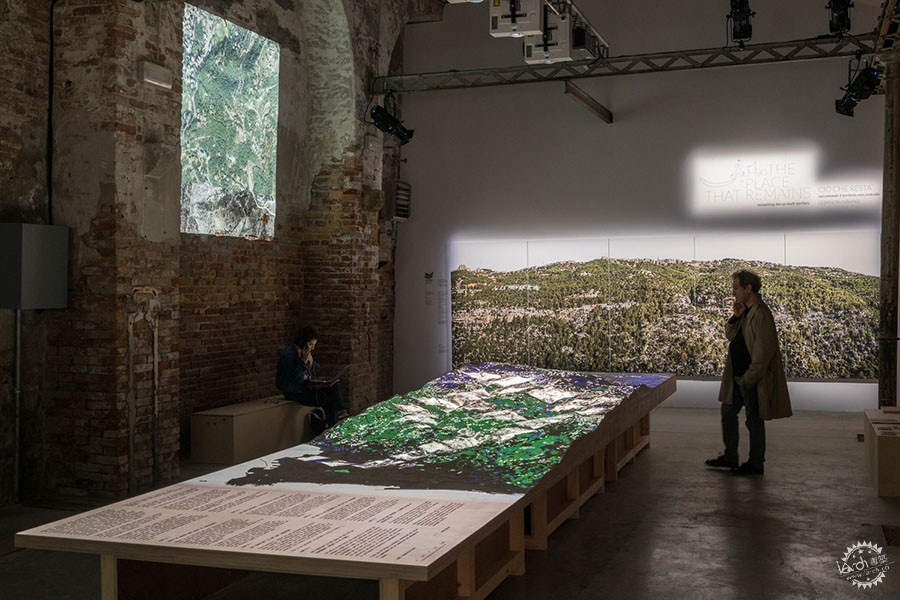
Lebanon Pavilion at the 2018 Venice Biennale. Image
Grafton在展示这片土地广阔空间的同时,也暴露了近年来建筑双年展的一个缺点,即其规模过大。人们认为小一点的规模更能够展示出色的作品。但策展人在谈论这个问题的时候,都不太愿意减少展示空间,宁愿让整个空间看起来有些空旷。Grafton是一位经验丰富的建筑师兼策展人,这一方面在Centrale中体现出更强的掌控力,他们在Centrale中集合了一系列项目,其中许多项目引人注目,另外,Farrell和McNamara决定尽力打造历史环境。其中特别有效的举措是他们发现了由Carlo Scarpa设计的曾经贴满灰泥的窗户。策展人在审查Centrale图纸时重新发现了它,经过修复的窗户在双年展和威尼斯自来水厂的场地之间建立了视觉联系。
事实上,策展人对于融合历史和当代艺术家的作品的能力,使得Centrale成为很受欢迎的展览的专用空间,甚至更具启发性。特别有效的是,由客座策展人组织的专为20世纪著名有时被忽视的建筑师设计的准专题展厅,例如,瑞典原始现代主义者Sigurd Lewerentz设计的三座小教堂,因其综合了尺度和空间用于公共聚会和私人沟通而闻名。在另一个例子中, Cino Zucchi在“Daily Wonder”中把战后的米兰实践者 Luigi Caccia Dominioni当做他们的朋友,这是一种令人钦佩的个人表现。在几座画廊中, Robert McCarter展示了莱特、柯布西耶、路易•康以及野口勇(Noguchi)的四个未实现的建筑项目,这扩展了回顾性的轨迹。这从亚历杭德罗•阿拉维纳( Alejandro Aravena)2016年的建筑双年展来看,这段建筑历史是一个转折点,不过,人们不禁会注意到,人们对欧美建筑师的作品有着持久的依赖与期待。
In laying bare and celebrating the expanse of this territory, Grafton also exposed a persistent shortcoming of the Architecture Biennale in recent years: It’s too big. One can only hope that downsizing the event would give curators an actionable incentive to display the most exceptional work rather than all of it. For all their talk of “generosity,” the curators’ inability or unwillingness to pare down the plethora of content on view in the Corderie made it an inhospitable site at best. Grafton’s impulses as experienced architects on the one hand and curators on the other are more compatible in the Centrale, where the assembled array of projects—many of them compelling— was complemented by Farrell and McNamara’s decision to elevate the historic environs to the status of display object. One particularly effective move was their uncovering of a once-plastered- over window designed by Carlo Scarpa. Rediscovered by the curators while they were reviewing drawings for the Centrale, the restored oculus establishes a visual connection between the Biennale and its siting among Venetian waterworks.
Indeed, the curators’ aptitude for commingling the work of historical and contemporary practitioners distinguishes the Centrale as the more palatable— at times even illuminating—of the exhibition’s dedicated spaces. Especially effective are the quasi-monographic galleries devoted to notable, if sometimes overlooked, 20th-century architects, organized by guest curators. Three chapels by Swedish proto-Modernist Sigurd Lewerentz, for example, are celebrated for their synthesis of scales and spaces for public gathering and private reflection by a team from ArkDes in Stockholm in Freestanding. In another instance, Cino Zucchi considers the Milanese postwar practitioner Luigi Caccia Dominioni in Everyday Wonders, an admirably personal display buoyed by their friendship. And several galleries over, Robert McCarter extends the retrospective trajectory by presenting four unrealized building projects for Venice by Wright, Corbusier, Kahn, and Noguchi. This architectural history constitutes a welcome pivot from Alejandro Aravena’s 2016 iteration of the Architecture Biennale, though one cannot help but note an abiding reliance on the work of European and American architects who are, to varying degrees, already known quantities.
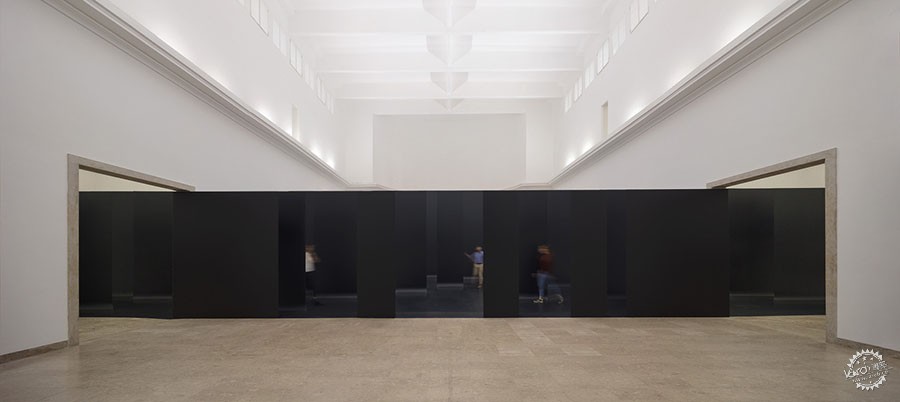
© Jan Bitter
Farrell和McNamara十分赞美这些实践者,这使他们展览有些主观,而非以研究为基础来说明一些建筑问题。这里强调的当代项目反映了历史中所涉及到的广泛问题,即通过包括Grafton自己的作品来表达场所营造、物质性、即兴创作等因素。由彼得•卒姆托工作室制作的模型展示为自由空间的脆弱性。卒姆托的模型由蜡和其他非永久性材料制成,它质疑了与建筑联系如此紧密的冷杉,同时唤起了描绘场地的精神,避开了真实的表现,取而代之的是达到大气的效果。在附近的一座画廊中,Caruso St John Architects展示了建筑的立面插图,并附有纪录照片,其正立面具有高度的美感和扁平的外观,形成美丽的韵律,但似乎与前面的展示没有什么关联,没有任何组织逻辑或解释性文本可用于描述这种特定的邻接关系。策展人显然很欣赏所有选定的建筑师,但这不足以让他们得到认可。总而言之,一位建筑师的杰出作品,与他的品味和他所策划的大规模主题展览的能力之间似乎并无关联。
在未来几年,威尼斯将不得不与更新颖的、更具地理位置优势的建筑展览竞争,第比利斯建筑双年展(Tbilisi architecture Biennial)将于10月开幕,沙迦建筑双年展(Sharjah architecture Triennial)将于2019年开幕,届时芝加哥建筑双年展(Chicago architecture Biennial)也将开放其第三期作品,即“相关性和权威”。这些小型灵活的双年展和三年展会让人们更清楚地了解当代建筑行业的各种情况,更重要的是,人们可以参与到各种辩论中来,在各种充斥着自由空间的项目中,威尼斯明显缺乏这种争论。
It would appear in the Centrale that Farrell and McNamara chose to praise practitioners whom they have long admired, rendering their curatorship an exercise in subjective taste-making rather than a research-driven endeavor to articulate a question or position that concerns the architectural profession writ large. The contemporary projects highlighted here reflect the broad concerns addressed in the historical displays—placemaking, materiality, improvisation—and in Grafton’s own oeuvre. A display of models, produced by Peter Zumthor’s atelier, introduces a kind of fragility to Freespace. Made of wax and other impermanent materials, Zumthor’s maquettes question the firmitas so often associated with architecture; they evoke the ethos of the depicted site, eschewing veristic representation to achieve an atmospheric effect instead. In a nearby gallery, Caruso St John Architects present illustrations of building facades accompanied by documentary photos. The highly aestheticized, flattened appearance of the facades makes for beautiful objects, but seems to have very little in common with the preceding display; at any rate, no organizing logic or explanatory text is readily available to account for this particular adjacency. The curators obviously admire all the chosen architects, but this should hardly be enough to merit their inclusion here. All told, there doesn’t seem to be a correlation between an architect’s stellar work, her admirable taste, and her ability to curate a thematic exhibition on such a scale.
In the years to come, Venice will have to compete with newer, more geographically dispersed architecture exhibitions—the Tbilisi Architecture Biennial launches in October and the Sharjah Architecture Triennial in 2019, when the Chicago Architecture Biennial will also open its third edition—for relevance and authority. These smaller, nimbler biennials and triennials stand to expose something more lucid about the contemporary state of the architectural profession and, significantly, to engage in the kinds of polemics that are, amid the sheer surfeit of projects in Freespace, pointedly lacking in Venice.
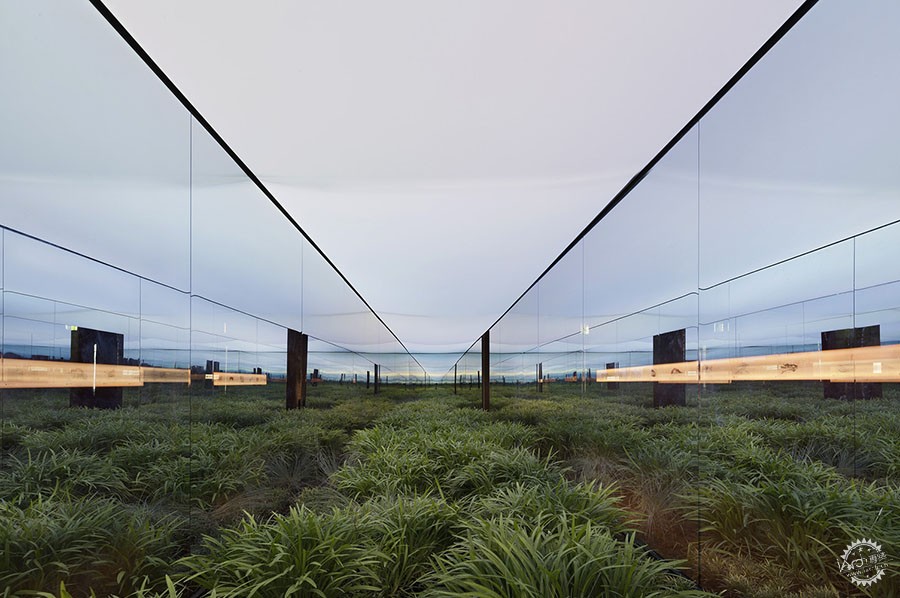
© Federico Cairoli
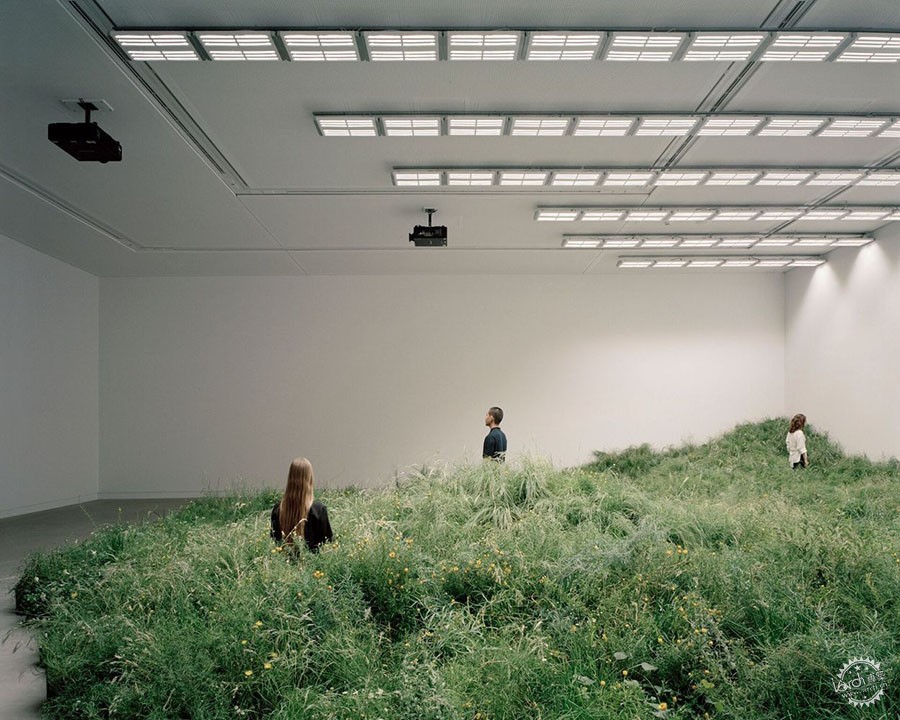
© Rory Gardiner. ImageAustralia Pavilion at the 2018 Venice Biennale
|
|
